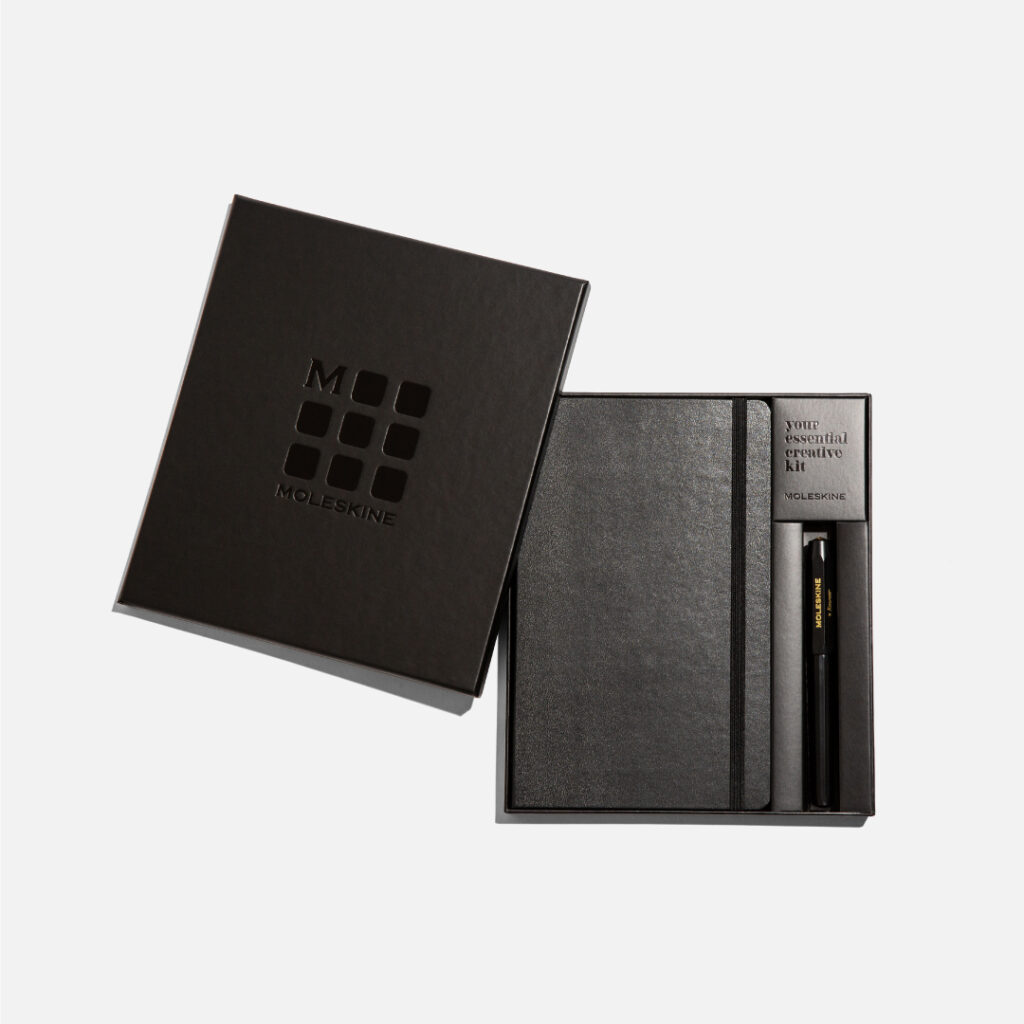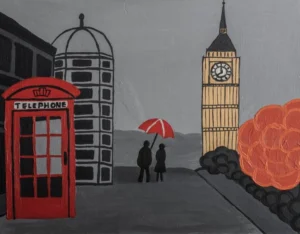At first glance, Moleskine’s “The Classic” Essential Kit appears deceptively simple: a sleek black notebook, an elegantly crafted pen, all housed within a minimalist box. Yet behind this unassuming presentation lies a rich history that traverses centuries of literature, art, and design. The kit embodies not only a tool for jotting down thoughts but also a philosophy—a quiet celebration of creativity’s enduring value in an increasingly digital world.
A storied lineage
The modern Moleskine notebook draws inspiration from the small black journals used by European artists and thinkers from the late 19th to the 20th centuries. These legendary notebooks were favored by the likes of Vincent van Gogh, Pablo Picasso, Ernest Hemingway, and Bruce Chatwin. They carried sketches of sunlit Provence, quick character studies scribbled in Parisian cafés, and raw travel notes destined to become novels.
When Bruce Chatwin famously referred to these notebooks as “moleskines,” he inadvertently gave them a name that would become a global brand decades later. After traditional production ceased in the 1980s, the brand Moleskine was officially reborn in 1997 in Milan, Italy, reigniting the romance of analog creativity.
The power of paper in a digital age
In a world dominated by glowing screens and instant cloud backups, the tactile intimacy of pen on paper offers a profoundly human counterpoint. The Moleskine “Classic” Essential Kit caters to this longing for authenticity. The smooth, ivory-colored pages are designed to glide under your pen, inviting everything from morning affirmations to complex storyboards.
Psychologists have long championed handwriting for its benefits to memory, cognition, and emotional processing. Writing by hand slows the mind, creating a meditative experience often lost in the rapid-fire typing of digital devices. With the Classic Essential Kit, Moleskine has positioned itself not merely as a stationery company but as a curator of mindful experiences.
Design as an ethos
The aesthetic of the Classic Essential Kit is distinctly Moleskine: minimalist yet haute, functional yet deeply poetic. The notebook’s iconic black cover, elastic closure, and rounded corners mirror the notebooks of the artists who inspired them. The pen, sleek and sturdy, is crafted to nestle uniquely into the kit, underscoring Moleskine’s dedication to elegant utility.
The embossed “M” on the box and the understated branding speak to a sophisticated design philosophy rooted in European modernism. Much like the Bauhaus movement, which emphasized form following function, Moleskine’s design choices are driven by purpose and clarity rather than ornamentation.
Gift of inspiration
Either presented to a seasoned writer, an aspiring artist, or a diligent journal-keeper, the Classic Essential Kit transcends the category of mere stationery. It is a symbol of support for the creative journey, an invitation to pause and reflect. In many ways, it resembles a blank canvas—full of possibility and free from expectation.
As a gift, it stands out for its refined packaging and emotional resonance. In an age when gift cards and impersonal gadgets dominate, the Classic Essential Kit feels deeply personal. It whispers: “Your words, your sketches, your thoughts—these matter.”
A companion across journeys
The notebook and pen have historically been companions on long voyages, capturing fleeting thoughts that might otherwise vanish like mist. Bruce Chatwin once said he felt uneasy when he was down to his last few notebooks before a trip, viewing them as essential as his passport. Today’s Moleskine users might echo that sentiment as they tuck the kit into a tote bag or carry-on.
Recent trends: analog renaissance
The resurgence of analog tools in recent years signals a cultural shift. From vinyl records to film cameras, consumers have rekindled an appreciation for tactile and imperfect mediums. This analog renaissance aligns perfectly with Moleskine’s ethos. Amid an endless sea of ephemeral social media posts and fleeting stories, a Moleskine page endures. It invites smudges, pressed flowers, and tear stains—signs of real life.
Moleskine and the literary imagination
In literature, the notebook has often played a supporting role. In Joan Didion’s essays, she writes of carrying a notebook everywhere to record overheard conversations and sudden insights. In Hemingway’s Paris years, his notebooks were filled with character sketches that would later populate The Sun Also Rises and A Moveable Feast.
Moleskine’s Classic Essential Kit is a contemporary echo of this tradition, bridging the old-world charm of the wandering writer with the modern creative’s hustle. It captures that fleeting spark—the idea scribbled on a train, the snippet of dialogue at a party—before it evaporates.
Ideologue
In its quiet black box, Moleskine’s Classic Essential Kit holds more than a notebook and pen; it holds a manifesto. It celebrates the analog impulse in a digital era, the yearning for permanence in a transient world, and the power of words and lines to shape our realities.
Each blank page is a tiny universe waiting to be charted. Each stroke of the pen is an affirmation that creation, in any form, is worthwhile. By returning to the humble act of putting pen to paper, the Classic Essential Kit gently reminds us of a profound truth: the most powerful technology we possess is our own imagination.
No comments yet.








